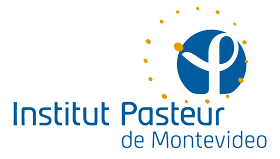Scientific games for all the family
The Institut Pasteur in Montevideo has a series of games on scientific topics and didactic materials to share with all the family. Below are links to access the material (in Spanish):
vacio
Coronavirus Crossword
GENIUS TRIVIA
We invite you to answer this GENIUS TRIVIA to learn more about some scientists and the findings that help make the world as we know it.
To learn more about the scientists who are part of the trivia, download this material.
Memory Lab
This game is a scientific version of the traditional memory game, which will allow you to discover 32 materials and equipment that can be found in a biology and chemistry laboratory.
To play, you first need to download the sheets (sheet 1, sheet 2 and sheet 3) and print them following these instructions:
- Print sheet 1, and on the back of that sheet print the sheet with the logos of the Institut Pasteur de Montevideo.
- Do the same with sheet 2 (and on the back print the sheet with logos).
- Print each sheet twice (in both cases with the logos on the reverse). This will result in 4 printed sheets on both sides (two units from sheet 1 and two from sheet 2).
- If it is not possible to print each sheet on both sides, another way to assemble the cards is to print 2 copies of sheet 1 and 2 and then print 4 copies of the sheet with logos. You will then need to glue these logo sheets to the back of each template.
- Once the sheets are printed, each card must be cut following the orange edges. In this way, the 64 chips that make up the game will be obtained, that is, 32 double chips.
- And you are ready to play!
How to play?
Memory can be played alone or in groups of 2 to 6 people. The first step is to mix the cards and arrange them face down (with the logo of the Institut Pasteur de Montevideo facing up).
After defining who starts the game, the first player must turn over two tiles. If they coincide —that is, if they have the same drawing—, the player keeps both tiles and keeps going around another two until the tiles he picks up are not the same.
When the tiles that you turn do not match, you must put them back face down in the same place and the turn passes to the next player.
The key to the game is to remember the tiles that were turned over and where each one is, in order to uncover the two that are the same when it is your turn.
The person who wins will be the one who manages to collect the most equal tokens.
You can download these printable instructions here.
vacio
Discover the scientist!
Can you discover which scientist is hiding behind each distorted image? Let’s play!
Let's paint Science
Scientific coasters
This game proposes a creative and also utilitarian activity.
The purpose: make scientific coasters with materials that are at home.
The requirement: they must have scientific drawings.
Here we share some traditional science icons for inspiration, but creativity is the most fun in this game.
Science stories
For the National Book Day 2022 and during the winter holidays, researchers and support staff of the Institut Pasteur in Montevideo read stories so that children could get closer to science in a fun way. These are the stories:
